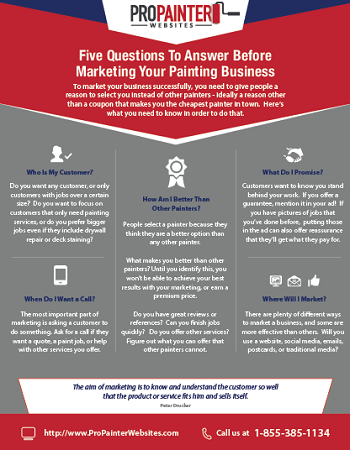Explore The Impact Of Seasonal Elements On The Effectiveness Of Industrial Outside Painting And Recognize The Optimum Times To Attain Long-Lasting Results For Your Job
Explore The Impact Of Seasonal Elements On The Effectiveness Of Industrial Outside Painting And Recognize The Optimum Times To Attain Long-Lasting Results For Your Job
Blog Article
Content Writer-Carlson Decker
When you're planning an industrial external painting task, seasonal elements can make or damage your outcomes. You'll want to think about how temperature and humidity influence paint application and drying times. Choosing the best period can ensure your paint adheres effectively and lasts longer. But which periods are absolutely the best for this sort of work? Let's explore the key elements that can influence your project's success.
The Influence of Temperature on Paint Application
When you're planning an industrial external paint task, the temperature level can considerably influence just how well the paint sticks and dries out.
Ideally, you intend to paint when temperatures range between 50 ° F and 85 ° F. If it's also cold, the paint might not treat appropriately, leading to concerns like peeling or breaking.
On exterior painters , if it's too warm, the paint can dry as well promptly, avoiding proper adhesion and leading to an irregular coating.
You ought to likewise consider the moment of day; early morning or late afternoon provides cooler temperature levels, which can be a lot more beneficial.
Constantly inspect the producer's suggestions for the specific paint you're using, as they frequently provide advice on the optimal temperature level range for optimum results.
Moisture and Its Result on Drying Times
Temperature level isn't the only environmental aspect that affects your commercial external paint task; moisture plays a significant duty as well. High humidity levels can reduce drying times significantly, impacting the general top quality of your paint job.
When the air is saturated with dampness, the paint takes longer to cure, which can result in issues like bad bond and a higher danger of mold growth. If you're painting on a specifically moist day, be gotten ready for extended delay times in between coats.
It's essential to check local climate condition and plan accordingly. Preferably, go for humidity degrees in between 40% and 70% for optimum drying.
Maintaining these consider mind ensures your project stays on track and provides an enduring finish.
Best Seasons for Commercial Outside Paint Projects
What's the most effective season for your industrial exterior paint projects?
Springtime and very early autumn are usually your best options. Throughout external painters near me , temperature levels are light, and moisture levels are commonly reduced, producing suitable problems for paint application and drying out.
Avoid summer season's intense heat, which can cause paint to dry as well swiftly, leading to poor attachment and surface. Similarly, winter months's cool temperature levels can prevent correct drying and treating, risking the longevity of your paint job.
Aim for days with temperatures between 50 ° F and 85 ° F for ideal outcomes. Keep in mind to check the regional weather prediction for rainfall, as wet conditions can wreck your job.
Preparation around these factors guarantees your painting job runs efficiently and lasts much longer.
Verdict
To conclude, preparing your business outside painting projects around seasonal factors to consider can make a substantial distinction in the outcome. By scheduling job throughout the suitable temperature levels and moisture degrees, you'll guarantee much better attachment and drying out times. Keep in mind to keep an eye on regional weather report and pick the correct time of year-- springtime and very early fall are your best bets. Taking these steps will aid you accomplish a durable and expert coating that lasts.
